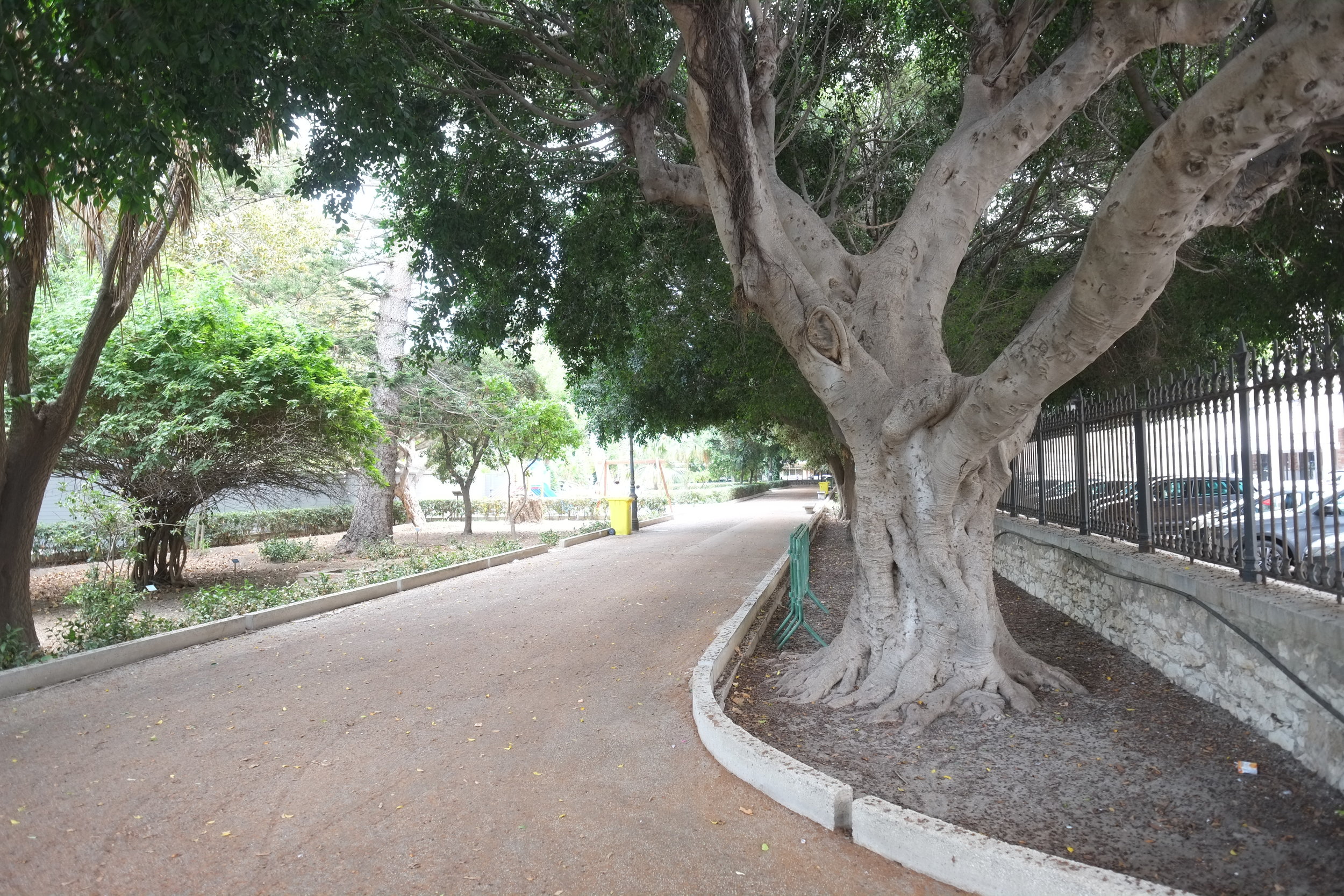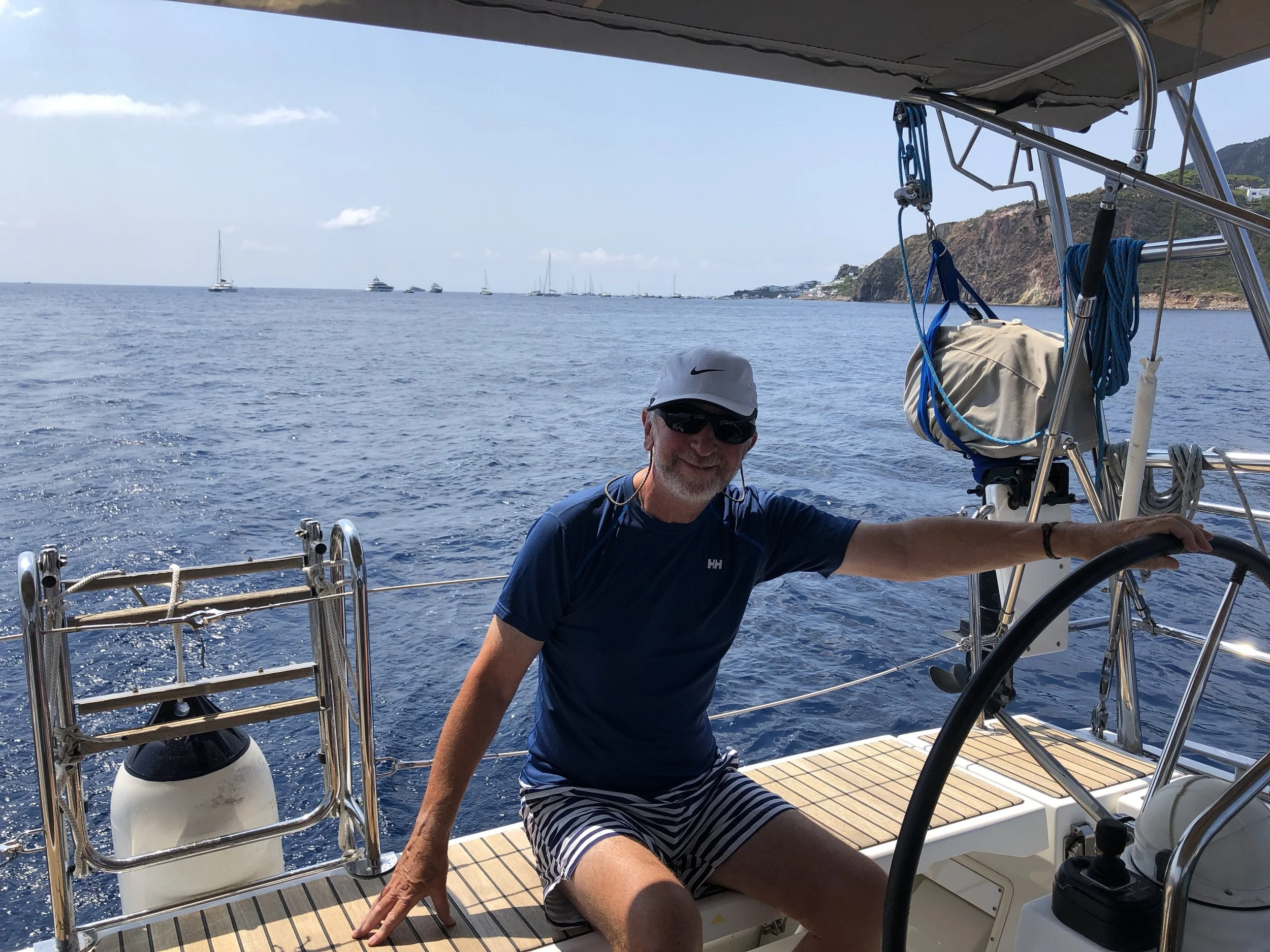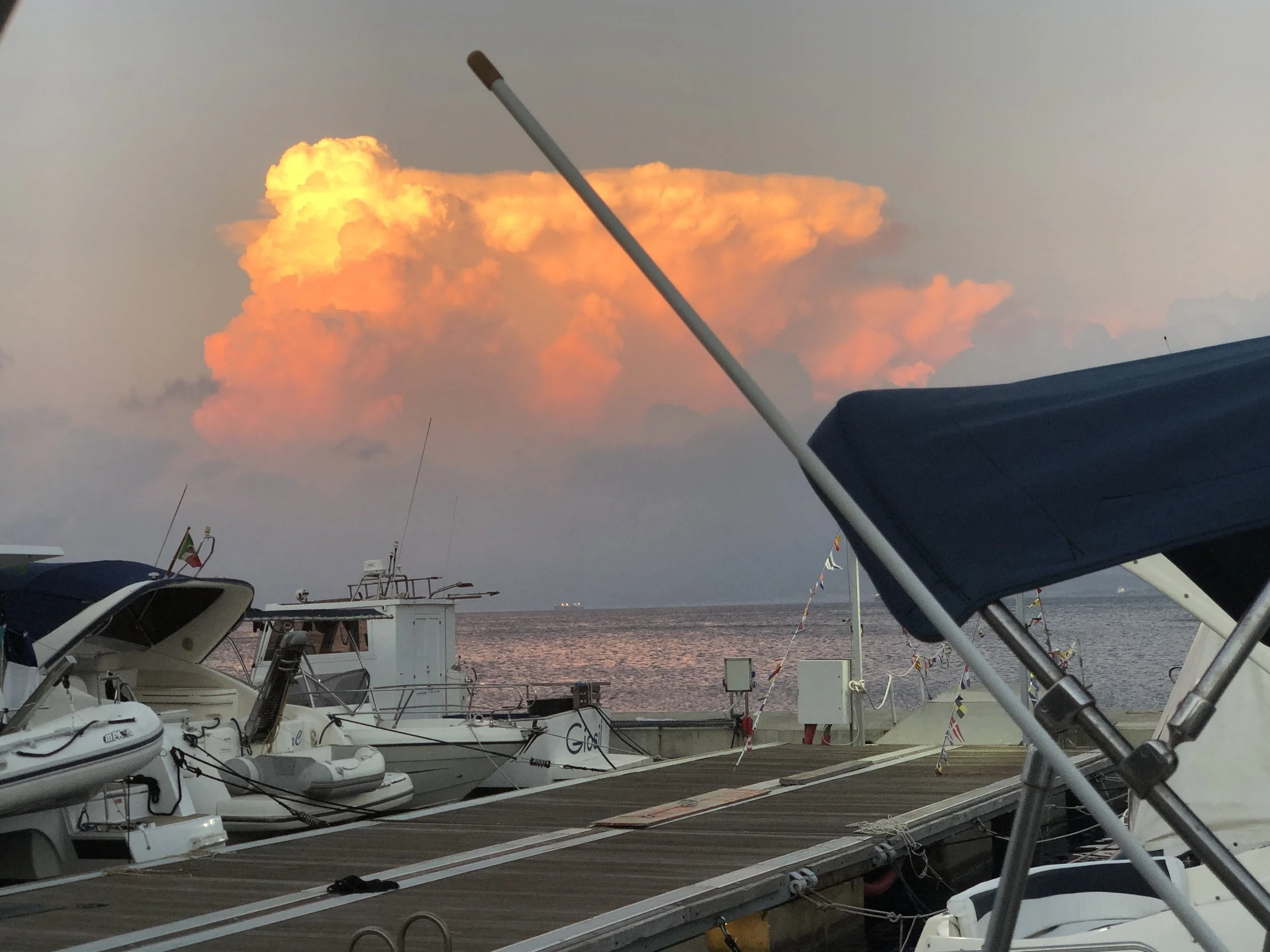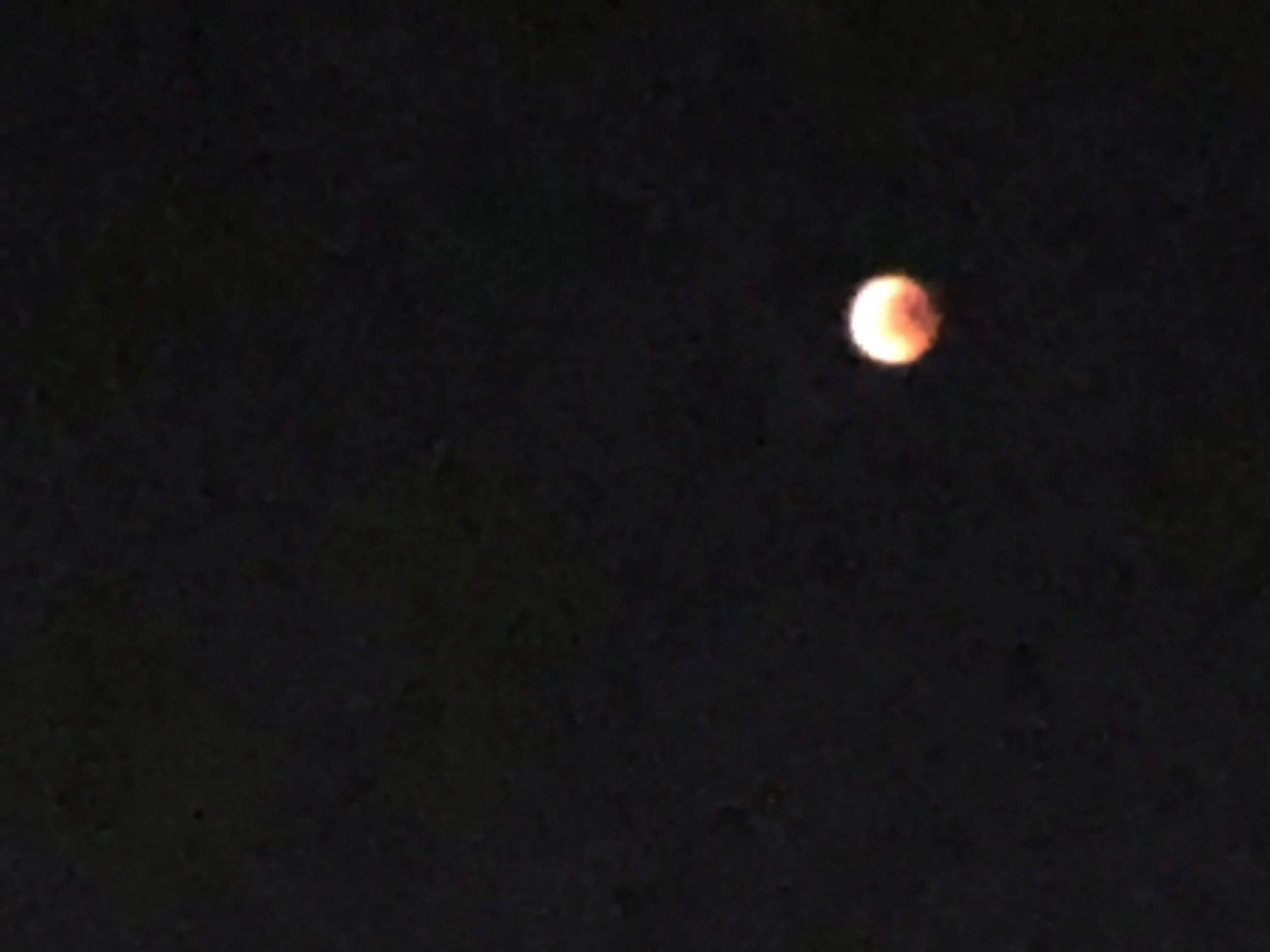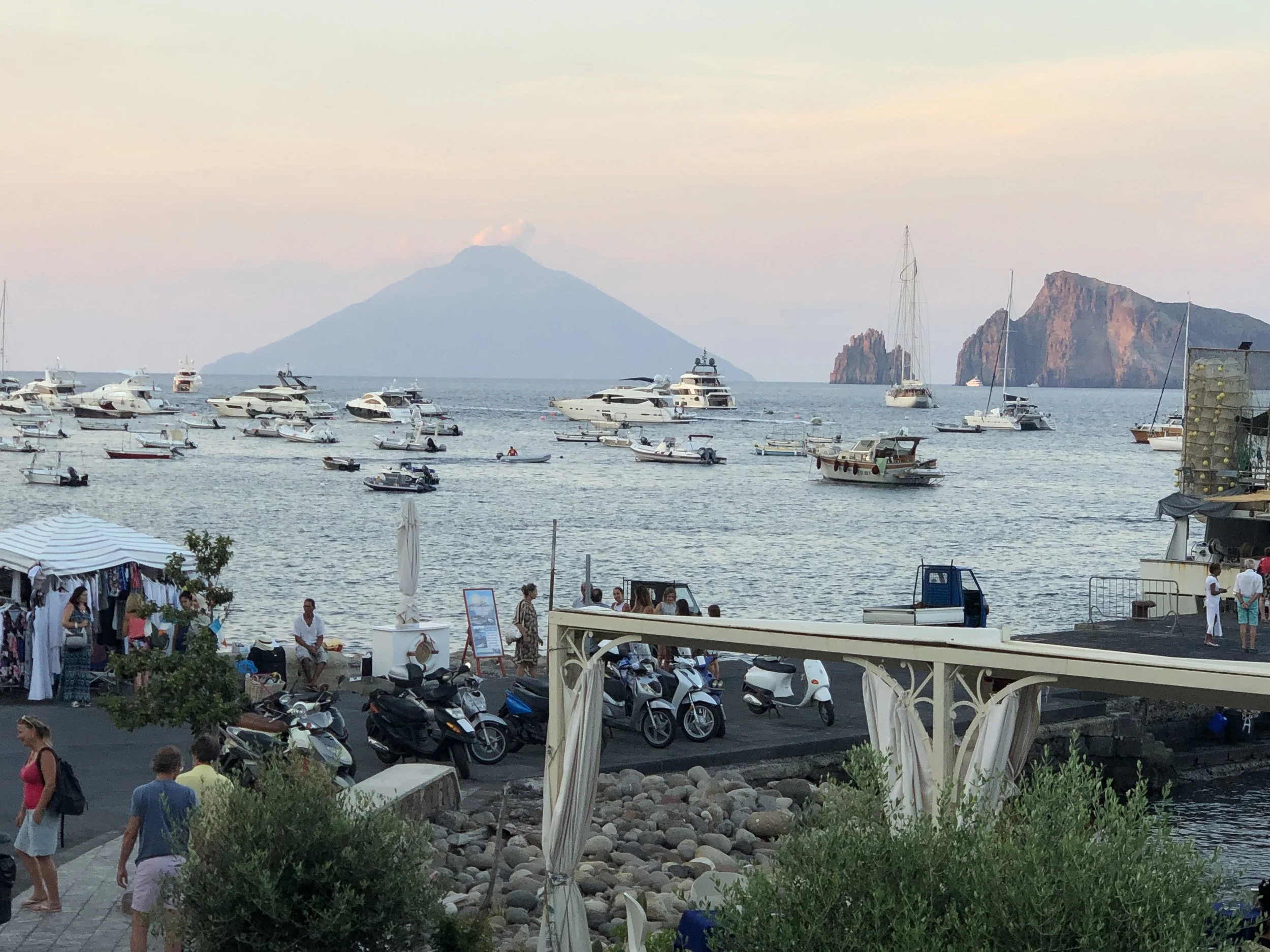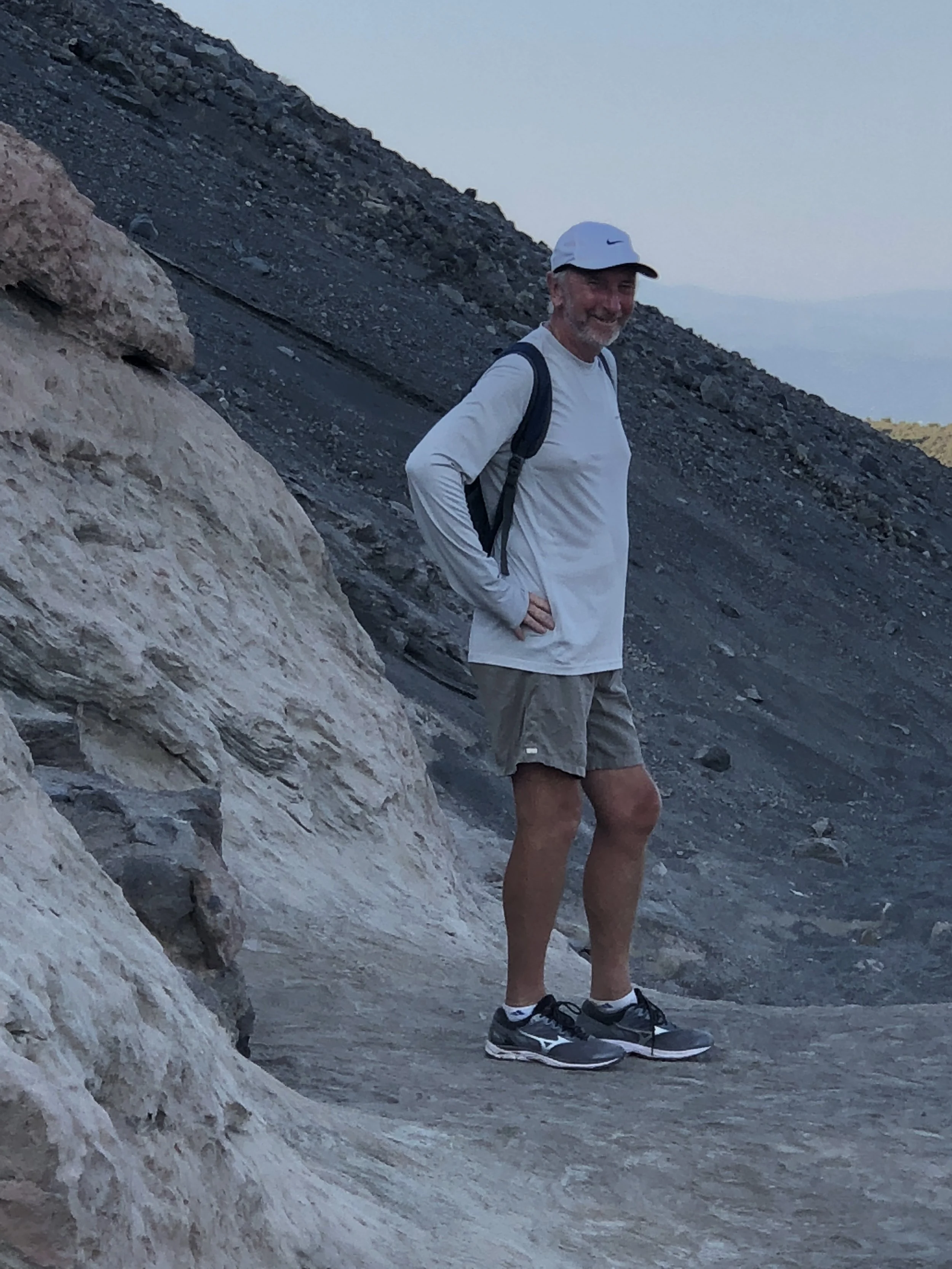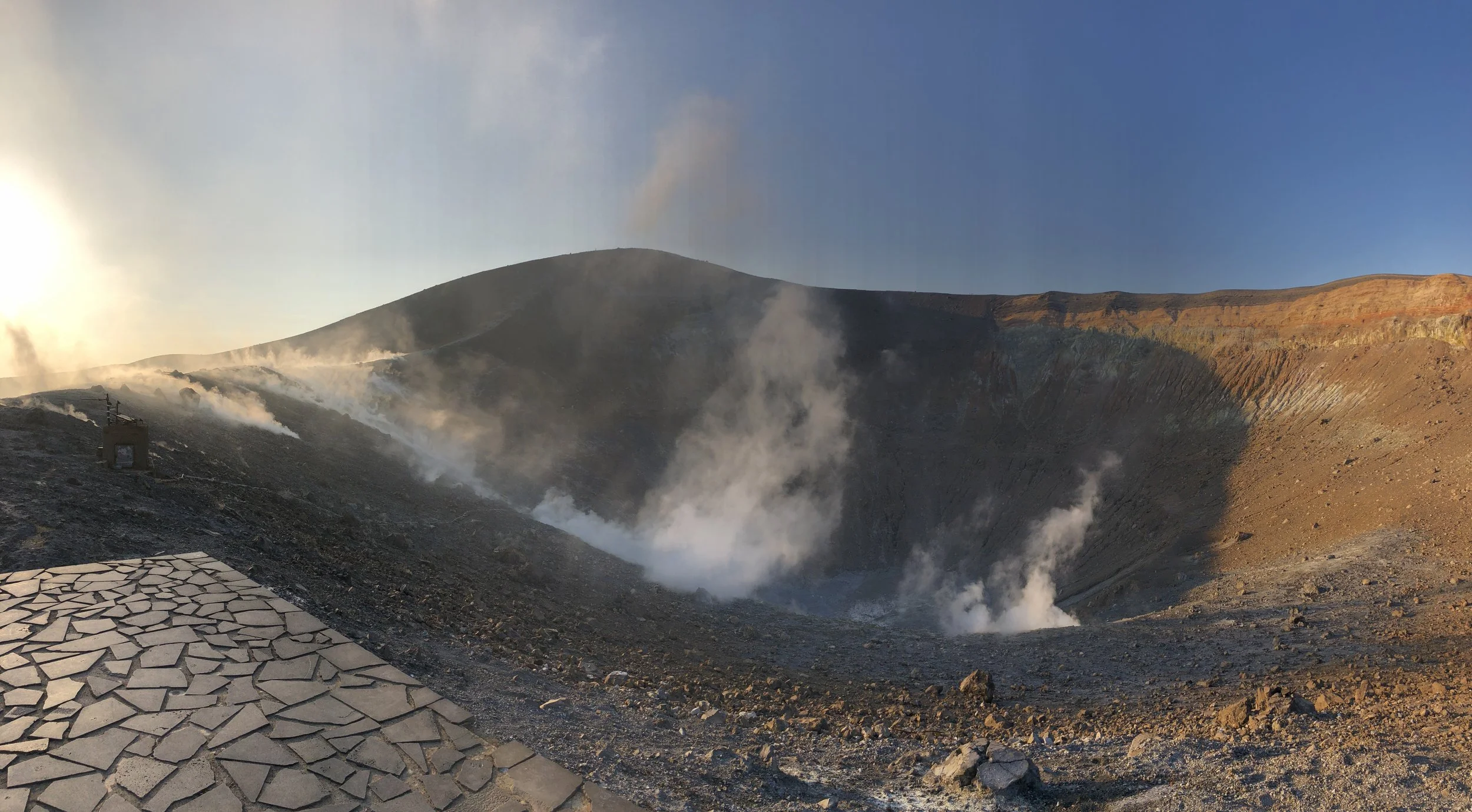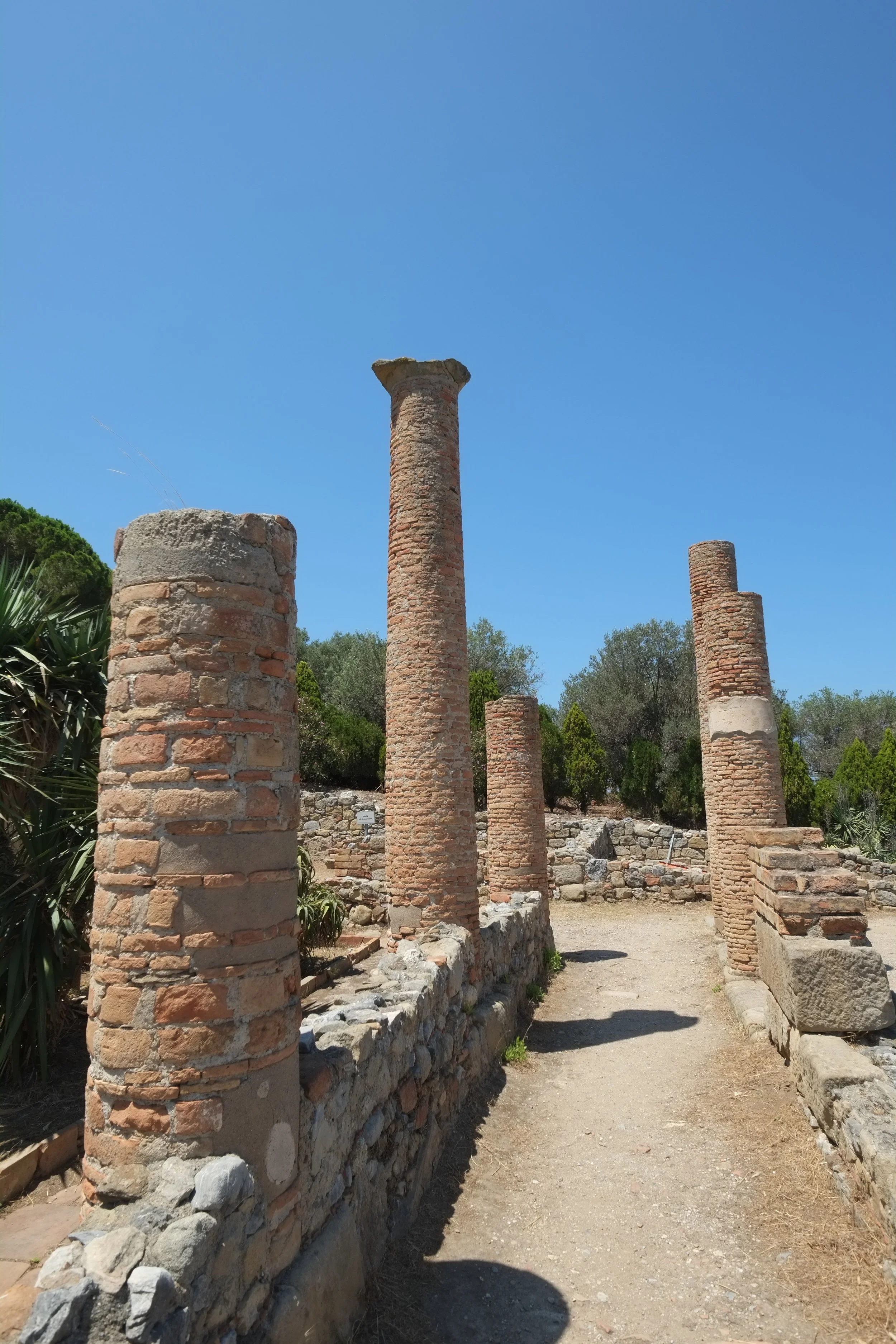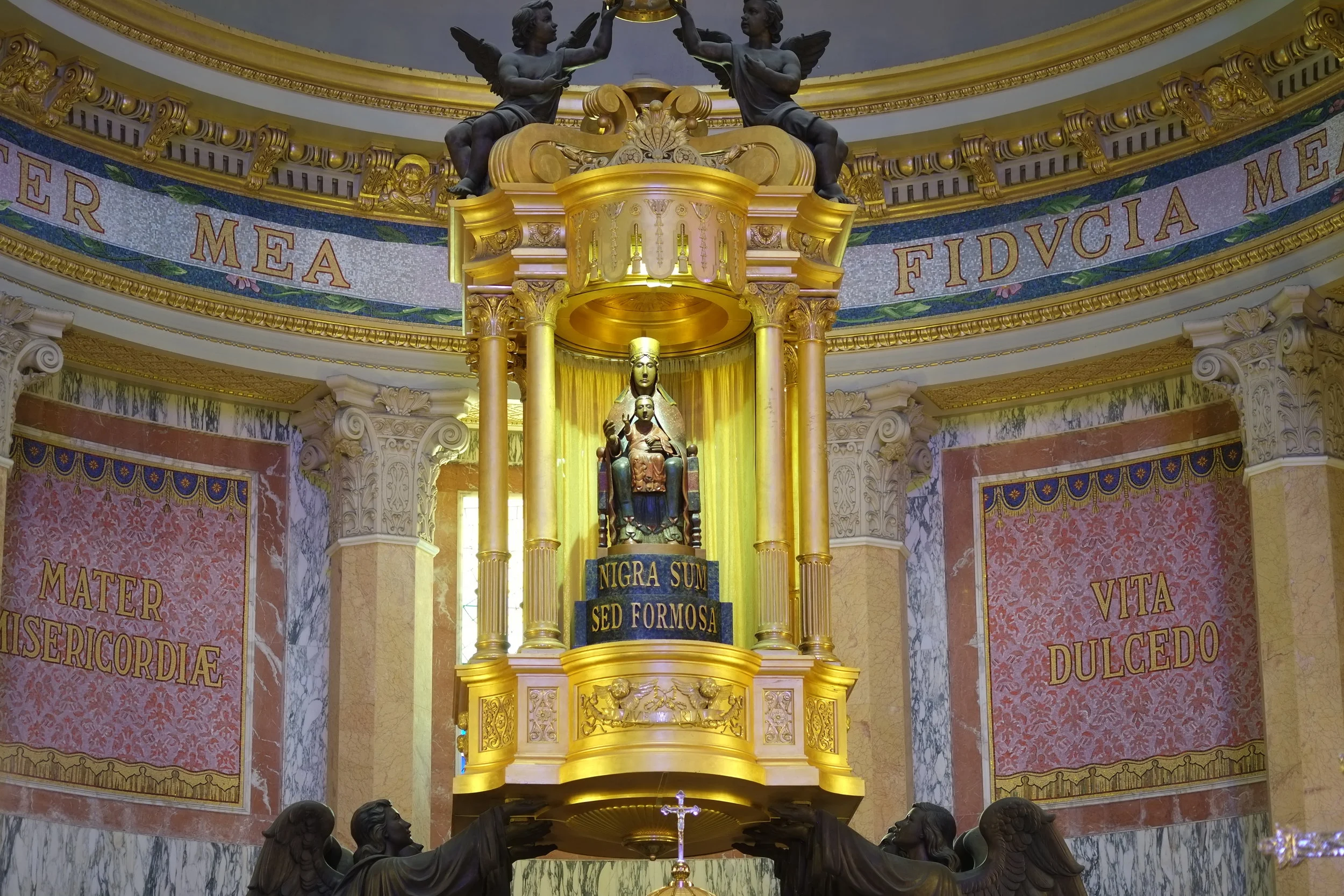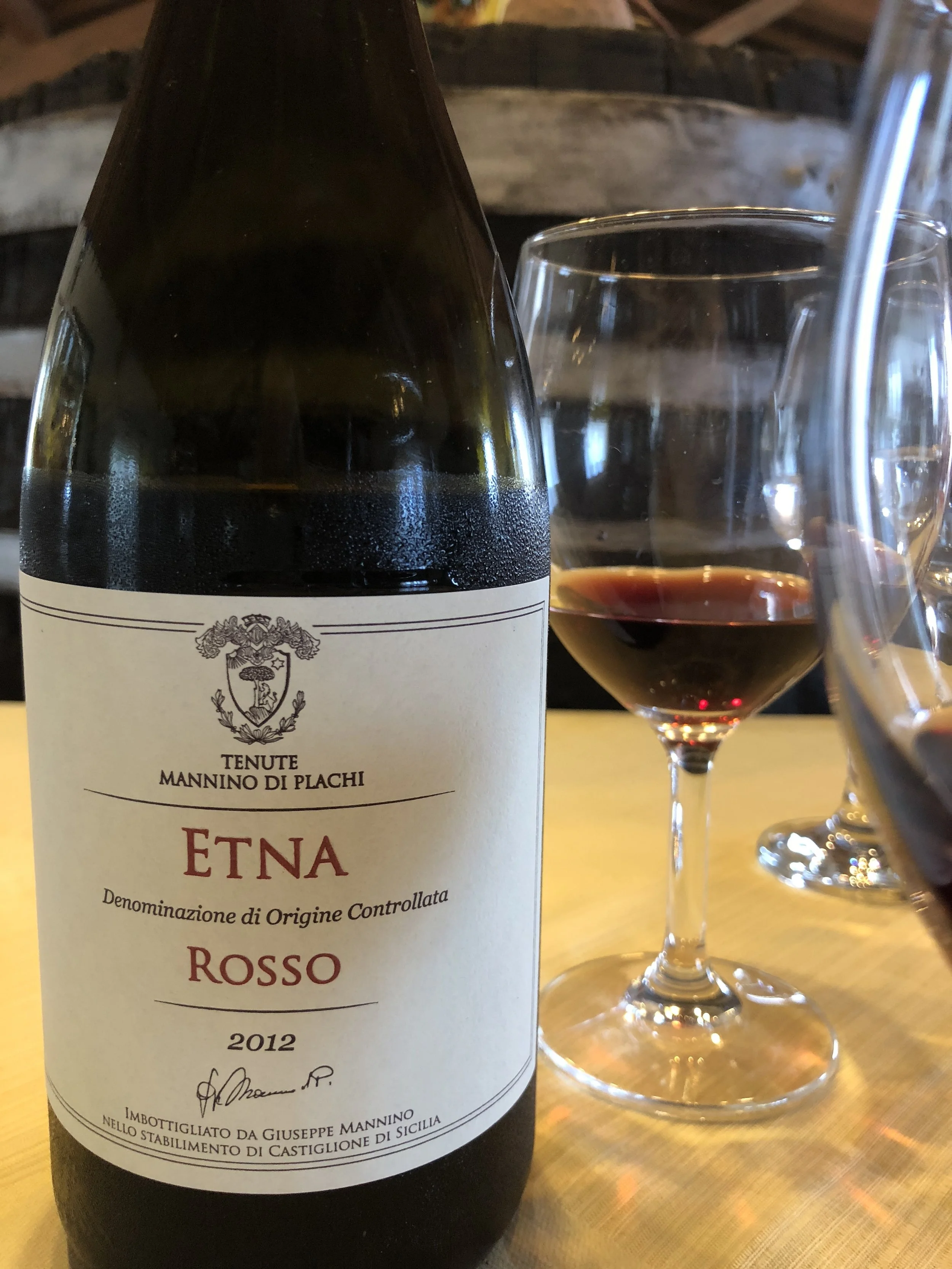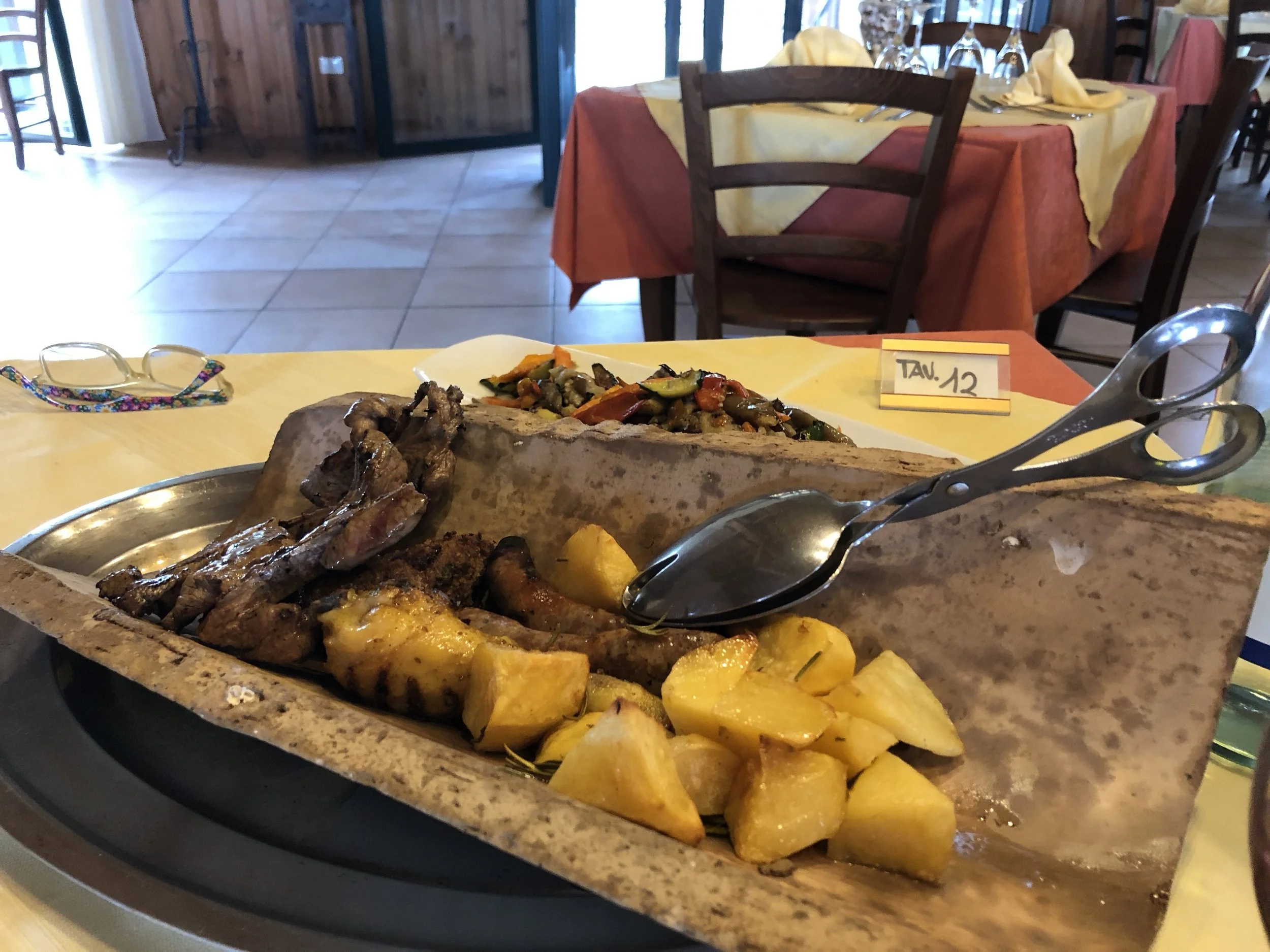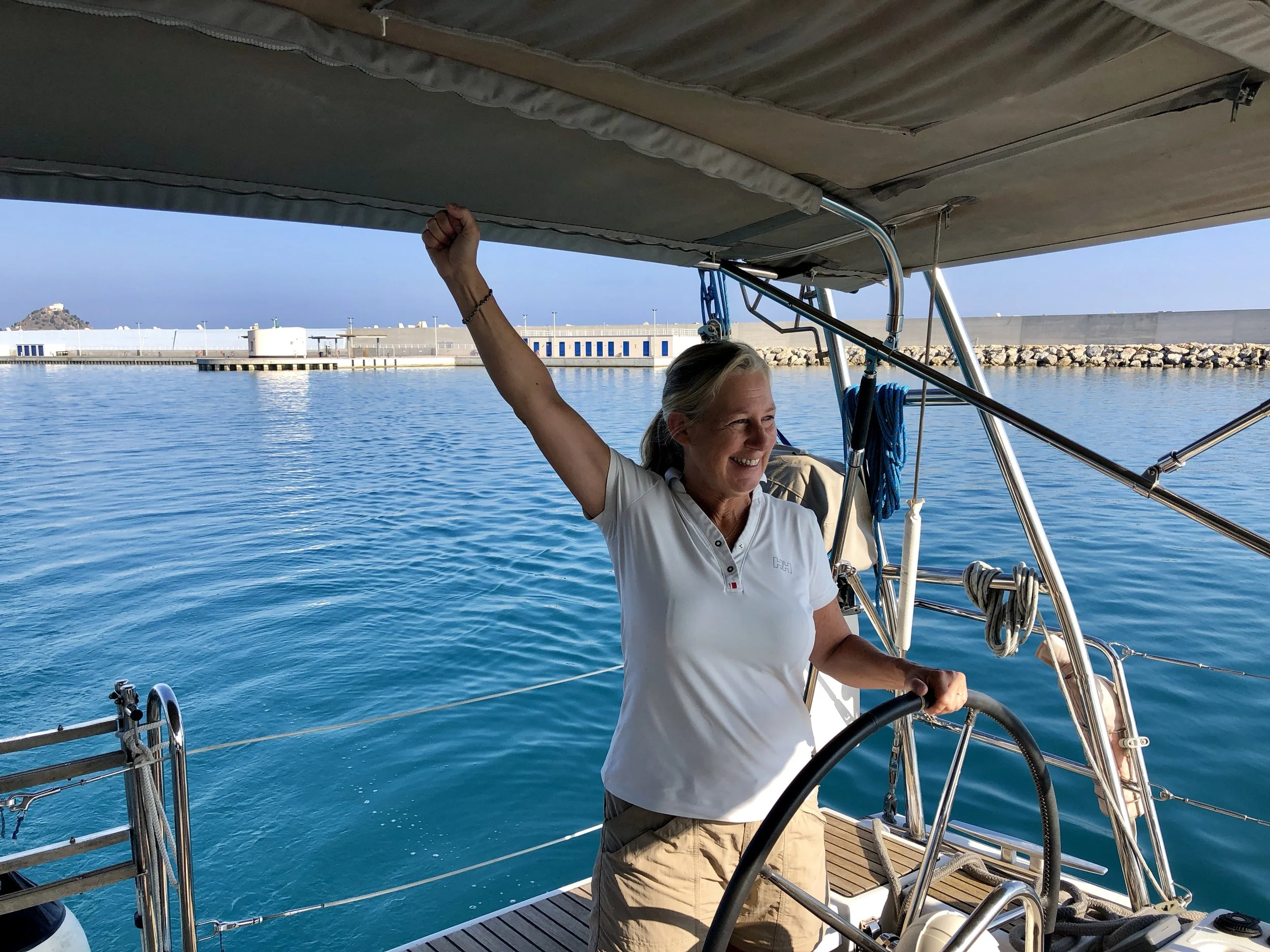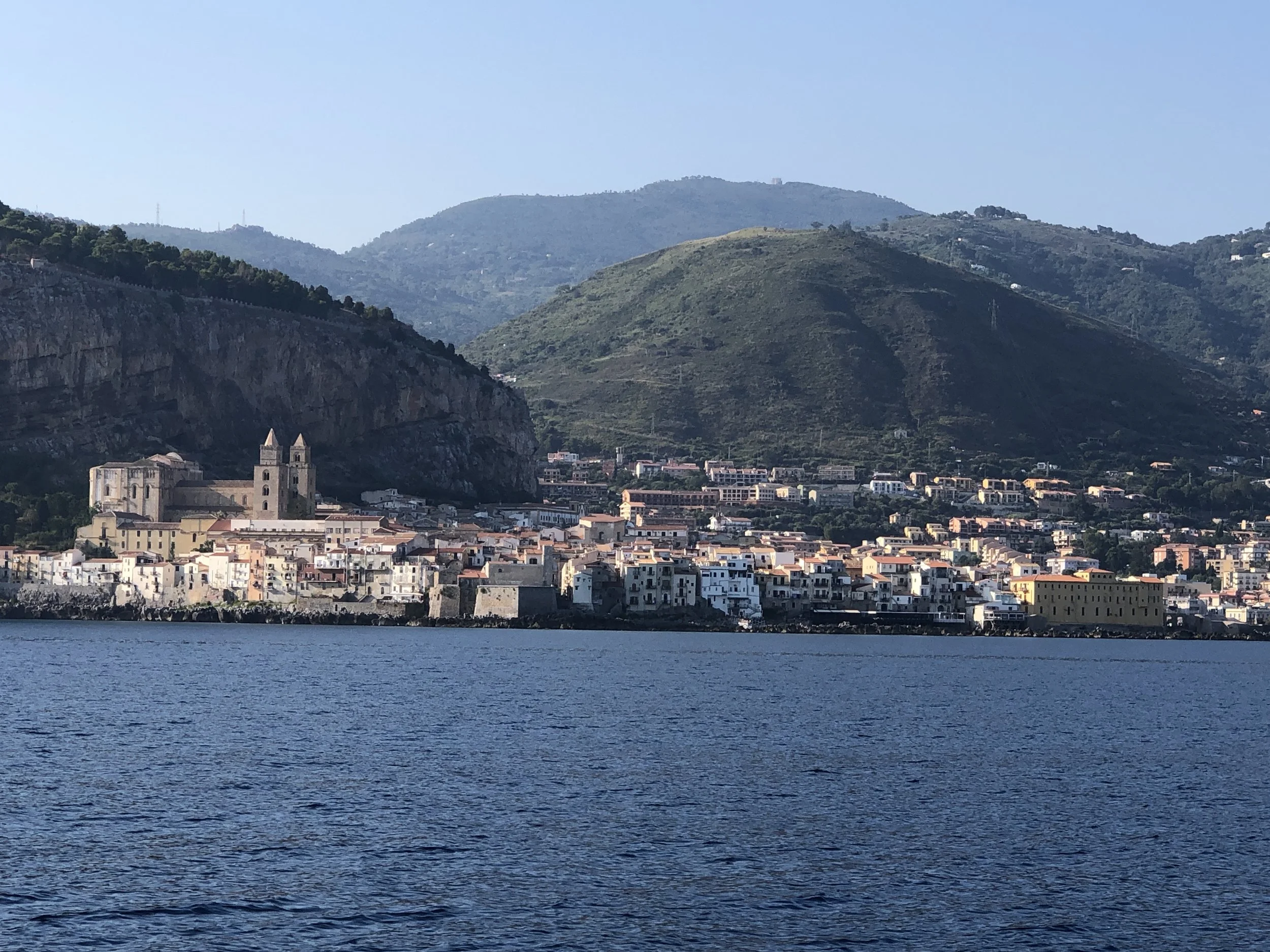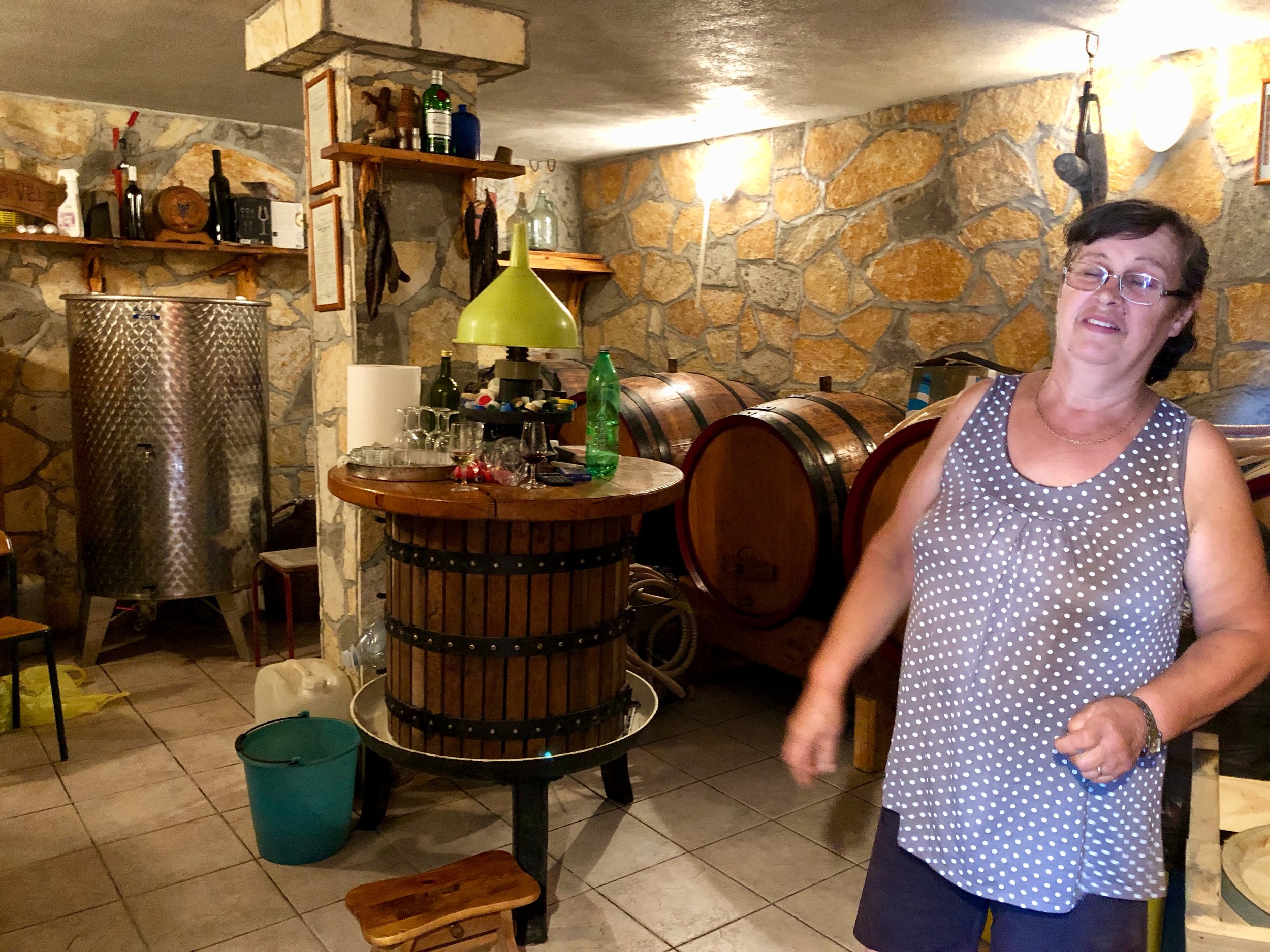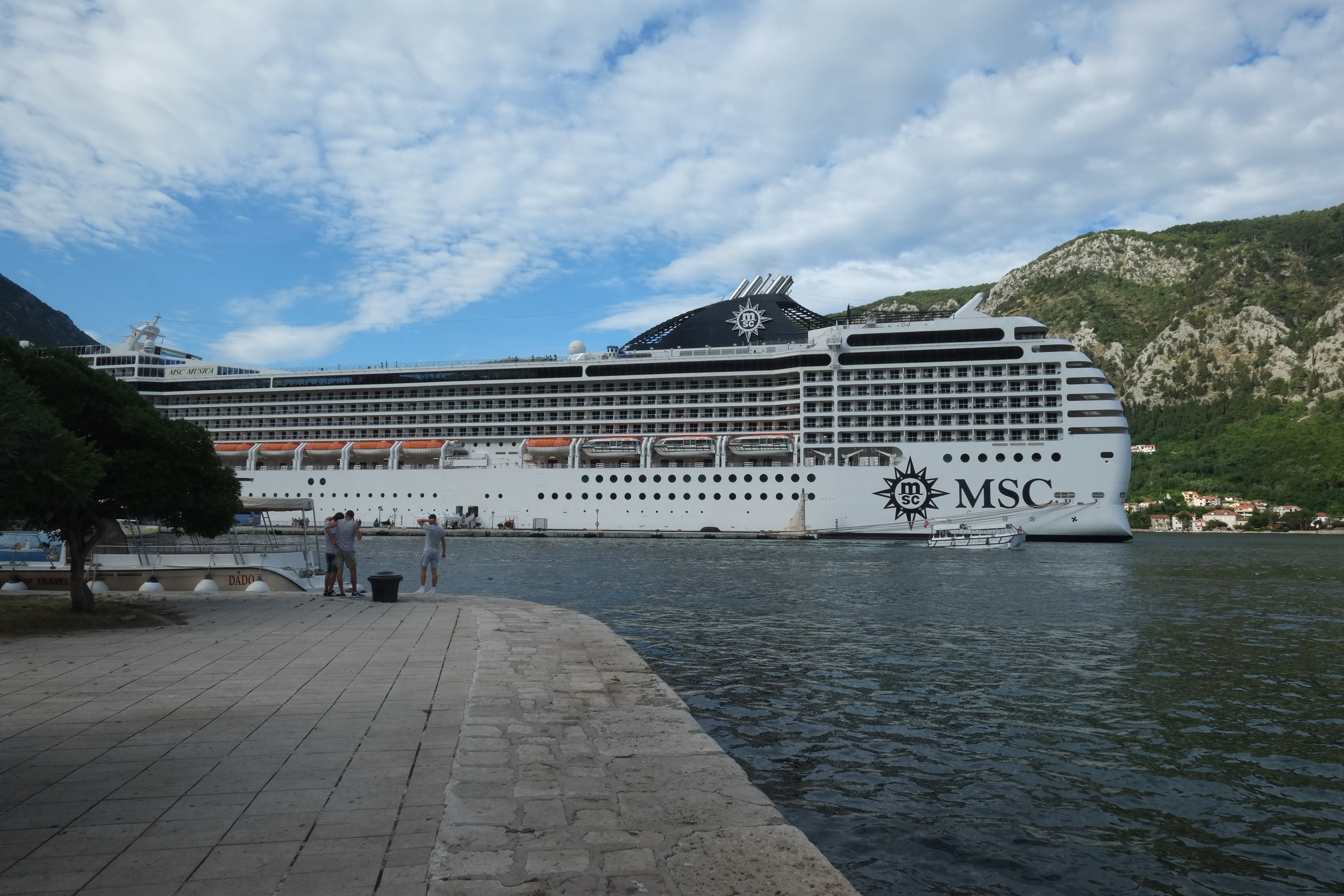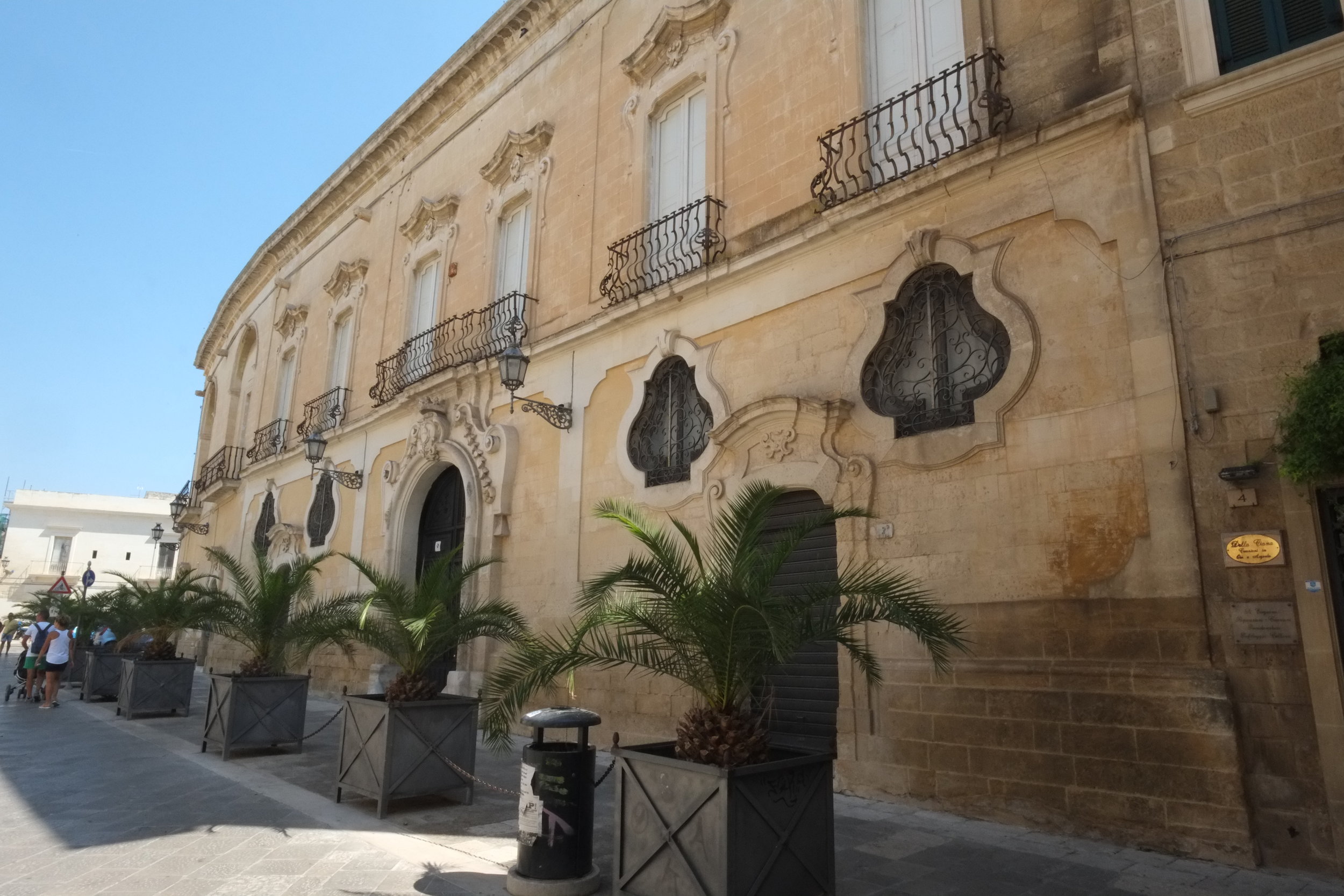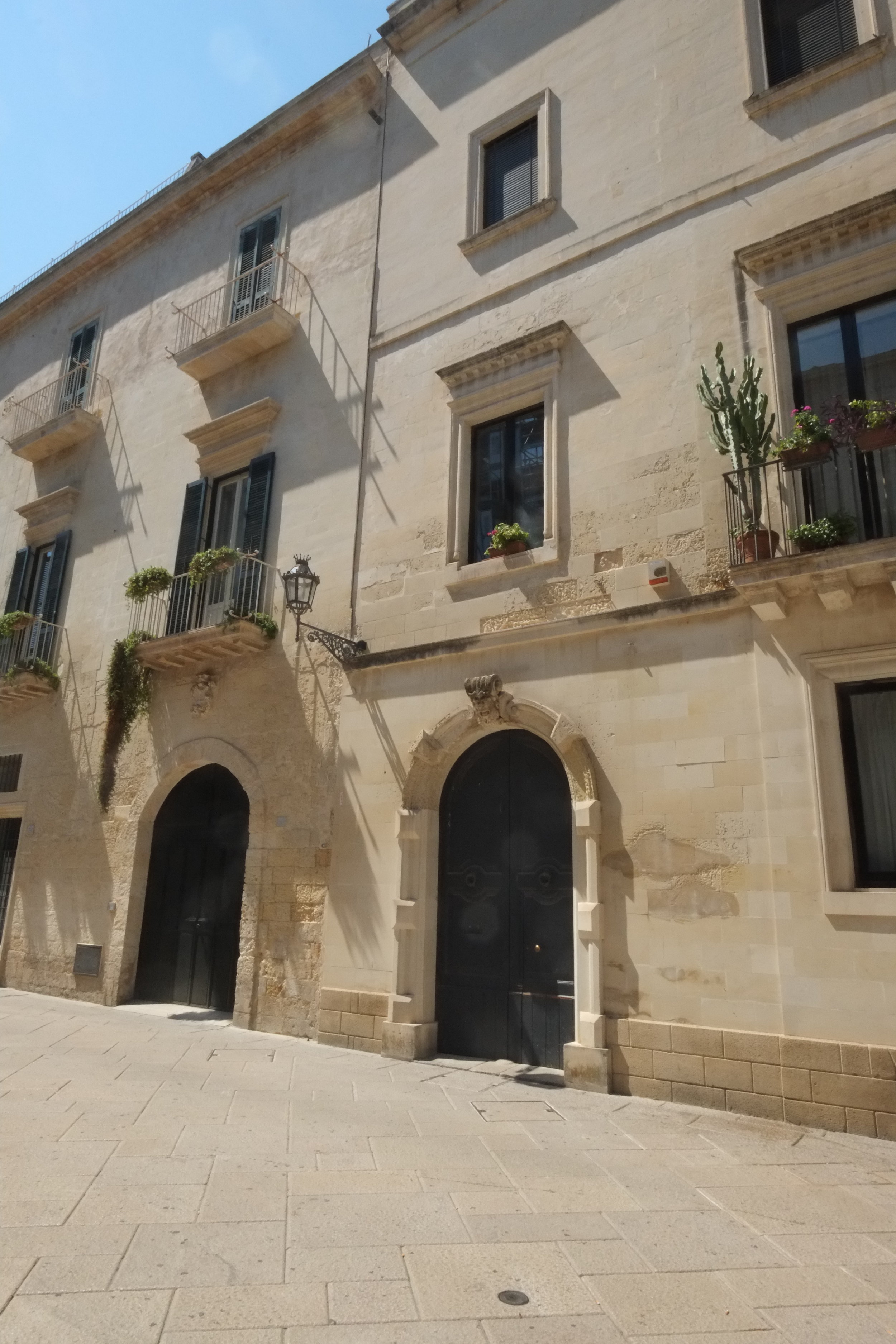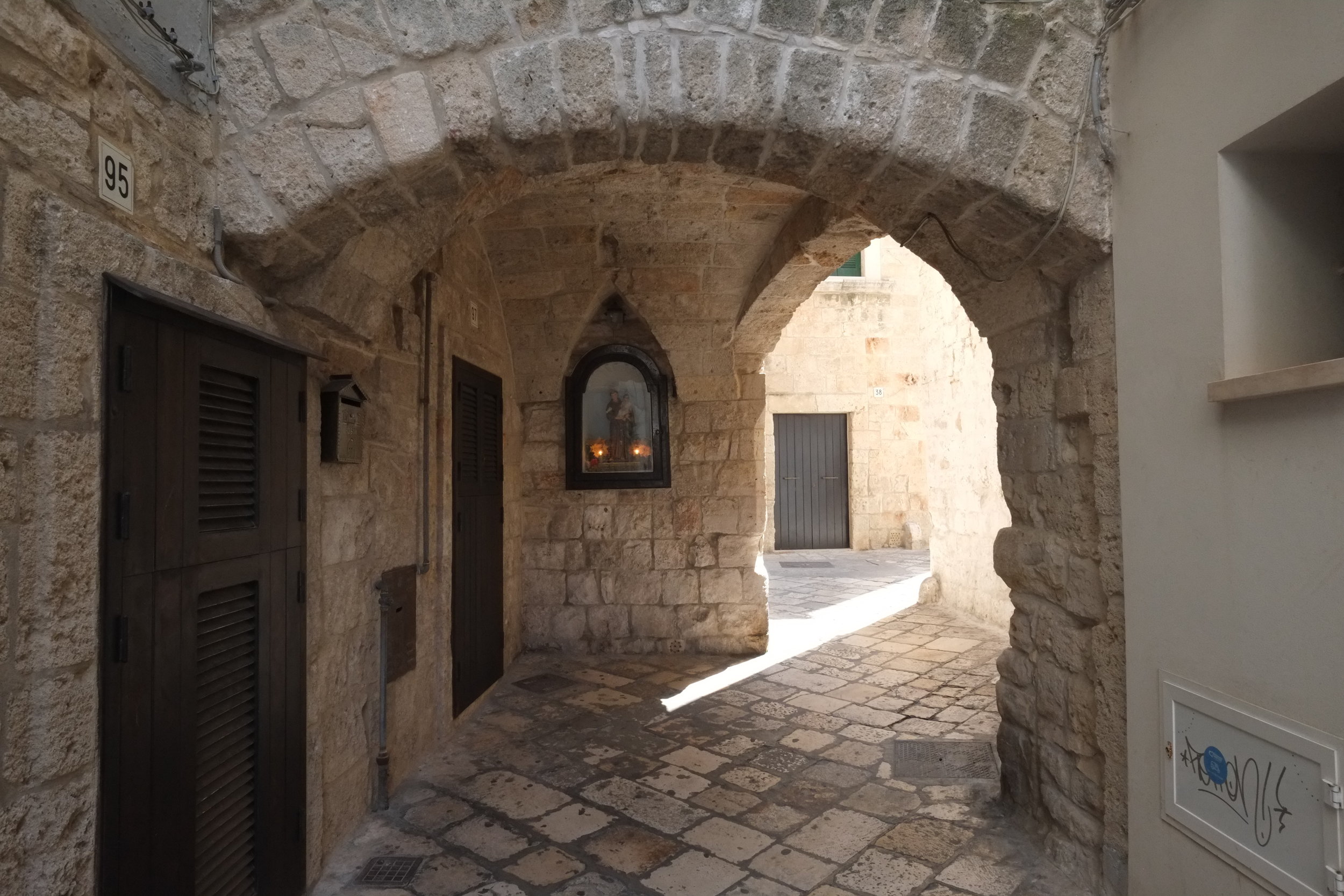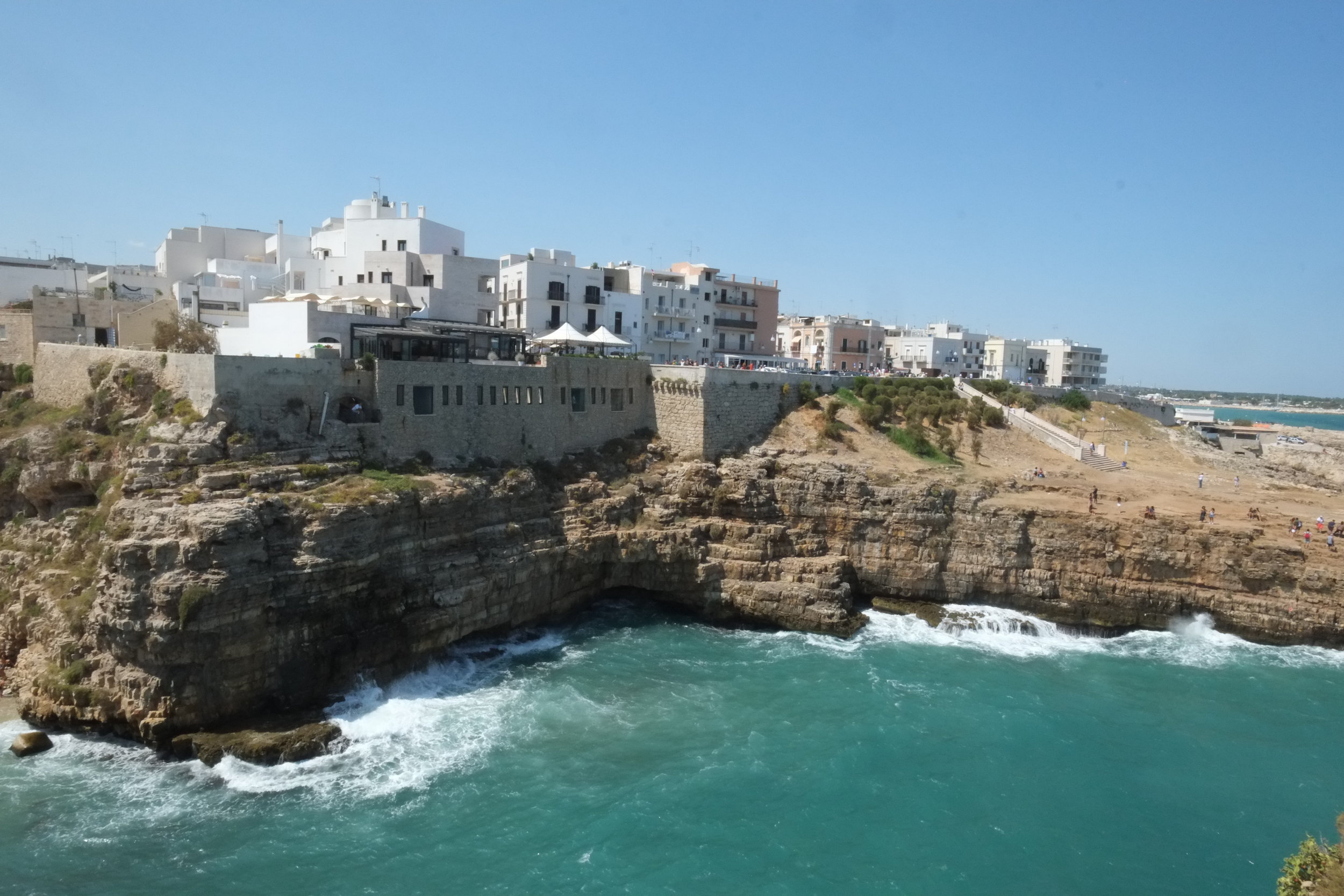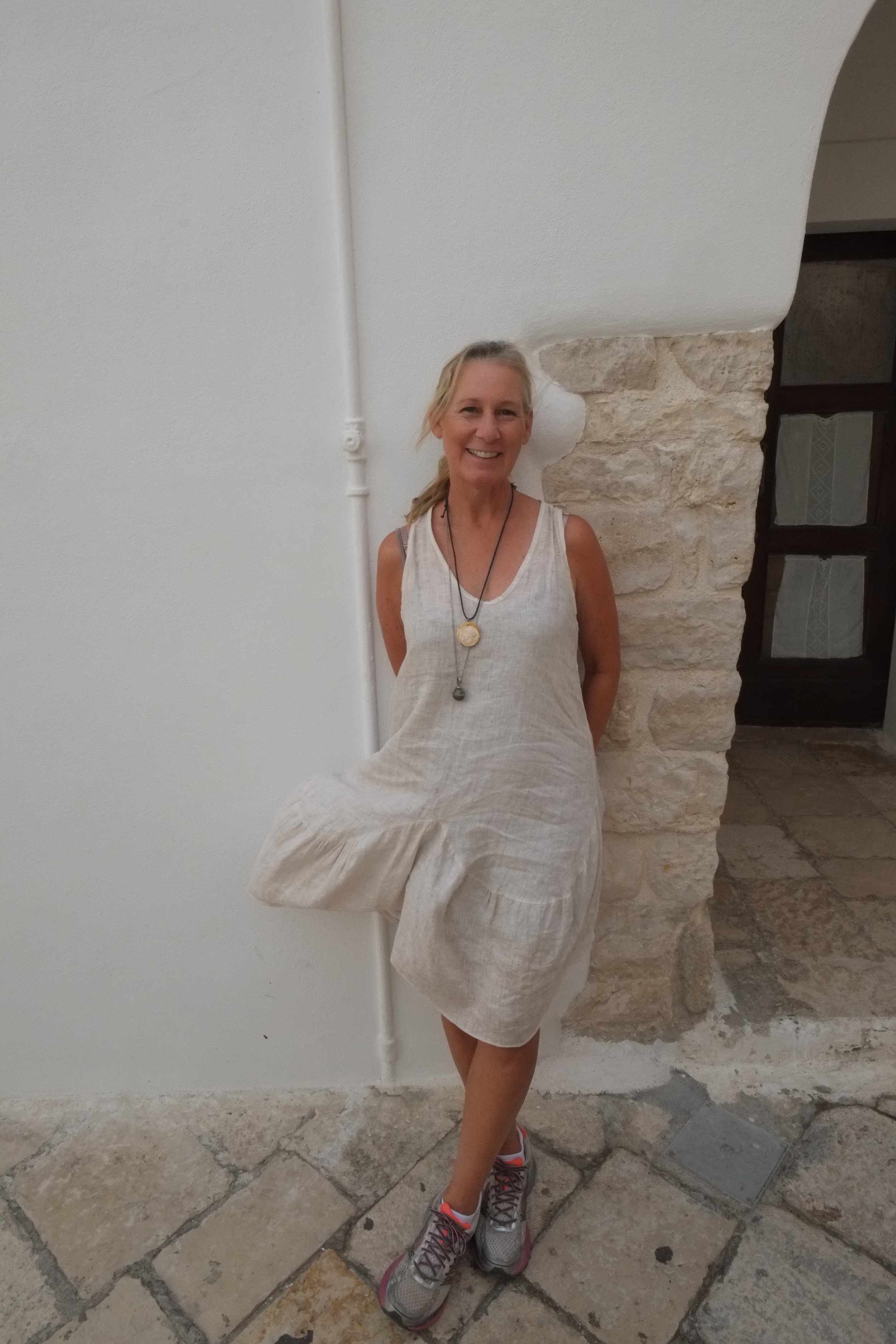The southern coast of Sicily is much less frequently visited by sailing yachts. There are no picturesque little islands to visit and there are only a few places where there is a sheltered anchorage. As a result most of our overnight stops in this segment of our trip are at little marinas.
This is not to say that there is nothing to see on this coast - in fact far from it.
Our first stop is Marsala where the sweet fortified wine comes from. Here we are resting up after our tumultuous thunderstorm crossing and hoping for better weather to come. We take the time to go into the town this year. We somehow didn’t quite manage to do that last time.
The old town hidden behind the scruffiness of the “newer” buildings of the port, is a surprise. Baroque-style building and churches with some nice pedestrian streets and some interesting shopping. We are enjoying this until we look at the sky. thunderstorms had been forecast (as usual) but this time they meant it. Early in the skies opened and the rain poured down. Streets were almost instantly flooded and we sheltered in a little arcade. One of the problems of being on a boat is that you usually can only get about on foot. So heavy rain is a problem; as are the flooded streets with cars making splashing waves as they drive through them with the usual Italian panache.
As the storm starts to pass, we dodge between sheltered spots trying not to get too soaked and too bedraggled in the process. Then we see an oasis (if you can have one in the middle of a downpour) - the Bianchi Marsala and Grappa distillery which has a reception and sales area.
We reluctantly ;) force ourselves to go in. We are soggy and a little disreputable; they don’t care.
We meet Claudio the grandson of the founder of the company who is working at the sales point. We taste Limoncello and Arancello (orange). Both are good but the Limoncello wins. Interestingly enough, Bianchi makes the Limoncello that’s sold through Trader Joe’s in the US. They are quite proud of this as you can see.
Lori vows to take this picture to her local Trader Joes to validate the authenticity of the product, get free stuff, become the official Trader Joes ambassador to Italy or some such. It’s not a bad plan.
However, additionally, they have grappa. We have been pleasantly surprised, as have some of our readers (you know who you are Perry) by the quality of the Puglia grappa. But this is better - the Founder’s reserve in particular. Lori tries to devise schemes for getting this in (or to) the US. We should all get behind her on this one. Until she works that out, in situ consumption is the only option. A hardship - but we’ll put up with it.
Lori is feeling the pressure of getting to Ragusa in time to meet our friends from last year Morella and Luigi (Captain of the Seven Seas). So we skip quickly through the next two marinas and, despite the non-cooperation of the weather, get to Ragusa in good time.
We have lunch and a long lazy afternoon on the boat with them I take the time to show Luigi more of the details on the boat. He checks the oil, makes sure our lines are tight and gets to start the engine. This is all a pretty big deal and we celebrate this by giving him his official True Colors crew cap. He looks cool.
But, as he points out, the next thing he wants to do is sail. Maybe next time when we have a suitable lifejacket for him.
We are slightly ahead of schedule so decide to take a couple of days to hire a car and visit the interior. It’s a good change of pace and there are interesting places beyond the coastline.
Moon over the marina
Our first stop is Caltagirone renowned for its traditional ceramics. The town is pretty much focused on ceramics with artisanal workshops all over the place.
The style is pretty specific and the designs are displayed in a unique fashion - on the risers of a set of steps in the town. The steps are lined with shops selling all sorts of ceramic goods.
The beautiful lady is a one-off design not native to Caltagirone
I was a little disappointed however. I had hoped it would be a little like Murano in Venice where the same traditional workshops have evolved with new generations of designers who offer new concepts using the same long-established skills. But not yet in Caltagirone; the links to the past are clear but the future direction is not.
The landscape around here is quite unique. It is a blend of things that are familiar but the mix is quite unusual. The hills are steep and the tops are laid bare down to the grey rock underneath. Stones are used, much like inlaces in the UK, to make walls between large fields which have contented-looking cows and in the distance sheep and goats.
The steep hills imply deep valleys and gorges. We cross the two highest viaducts in Sicily - at up to 522ft high they are, you might say, impressive. Also a little nerve-wracking due to the tragic events in Genoa. But it is also worrying because recently another viaduct in Sicily collapsed (although the extent of the “collapse” is hotly disputed). However in this case and in true Sicilian style “revenge” has been vowed on the builders and architects. I’d be worried; if anyone understands the concept of revenge, it’s a Sicilian!
We survive multiple crossings of the bridges. A few more than necessary in fact. Lori was navigating with a paper map (I know) and we were not having much luck identifying the roads we needed to be on. I looked down at the map she was using two-thirds of the way through the day and said “Why aren’t you using the larger-scale map on the other side of the sheet?”
“There’s another map on the other side???????”
Ah well, we’re on vacation. And, in truth, the other map wasn’t that much better.
The viaducts lead to Modica a superb Baroque-style town that is split into two parts Modica Basso (low) and Modica Alto (high) which are joined by a set of (you guessed it) steps which climb the guidebook smugly says “is not attempted by many people”.
There’s no way we’re leaving that challenge on the table and we make our way up steps and along winding streets to the top of the hill and the inevitable cathedral dominating the surrounding valleys. It is worth the effort.
The other reward for all this strenuous climbing and daredevil bridge crossing is chocolate. Modica is famed for a chocolate that we've tasted before in the Aeolian islands but this is where it really comes from.
Some people say it's made by a cold process which does not require the cocoa to melt and gives the chocolate an oddly grainy texture. This is apparently not true - it is the absence of butter that gives it the unusual consistency. It is quite tasty but I doubt that any of it will survive all the way back to Arizona.
Back in the marina, there is a little store which is selling specialty foods, vegetables and wines from Sicily. They focus on organic artisanal produce. This evening they have a local farmer come with his vegetables. A large bag of onions, lettuce, courgettes and other stuff comes in at less than $2. Even with Amazon behind them, Whole Foods will be hard pressed to match this!
We also meet a nice French couple, Lionel and Isabelle, who are over from Malta where they have an apartment. We chat and decide to sail together the next day to Porto Palo which is right on the southeast corner of Sicily. The plan is to anchor in a fairly sheltered bay and make our way the day after to Siracusa.
The sail is supposed to be mellow and it is … for almost all the way. At then end and just before we are thinking about parking, the wind increases to 20 - 25 knots. Not ideal for anchoring. But we get there first and find a good spot and the anchor sets quickly and we are secure. I’m not sure if Lionel and Isabelle would have anchored if we had not done so, but they do a pretty good job and are just a few boat lengths from us.
The four of us have dinner on board True Colors and by the time the meal is over the wind has died completely and the water is still and the sky is clear. Everyone sleeps well.
The next day we motor over calm seas to Siracusa. This is one of our favorite places in this part of the world. The city dates back to Greek and Roman times and was the birthplace of Archimedes (of “Eureka” fame),
A cathedral with three architectural styles - - Greek, Roman and Norman.
The old town on the island of Ortigia is quite charming and, although a tourist destination, is not overrun in the way that so many others are. The mix of visitors and locals seems to be about right.
In the marina we meet Stephano on his rebuilt one-of-a-kind Sparkman and Stephens boat. He has been sailing for quite some time in the Italian Navy and in civilian life. He is a past president of the Italian Lega Navale (which promotes things relating to sailing and the sea and provides sailing opportunities for young people). He is a mine of local knowledge and a trove of stories about the sea and sailors.
Onion and orange salad
Mussels, of course
This is our last stop on Sicily sadly and we seek out good restaurants to savor the exceptional food of the island.
Lori's reaction to Sicilian food
It’s hard to leave the island and the town.

































